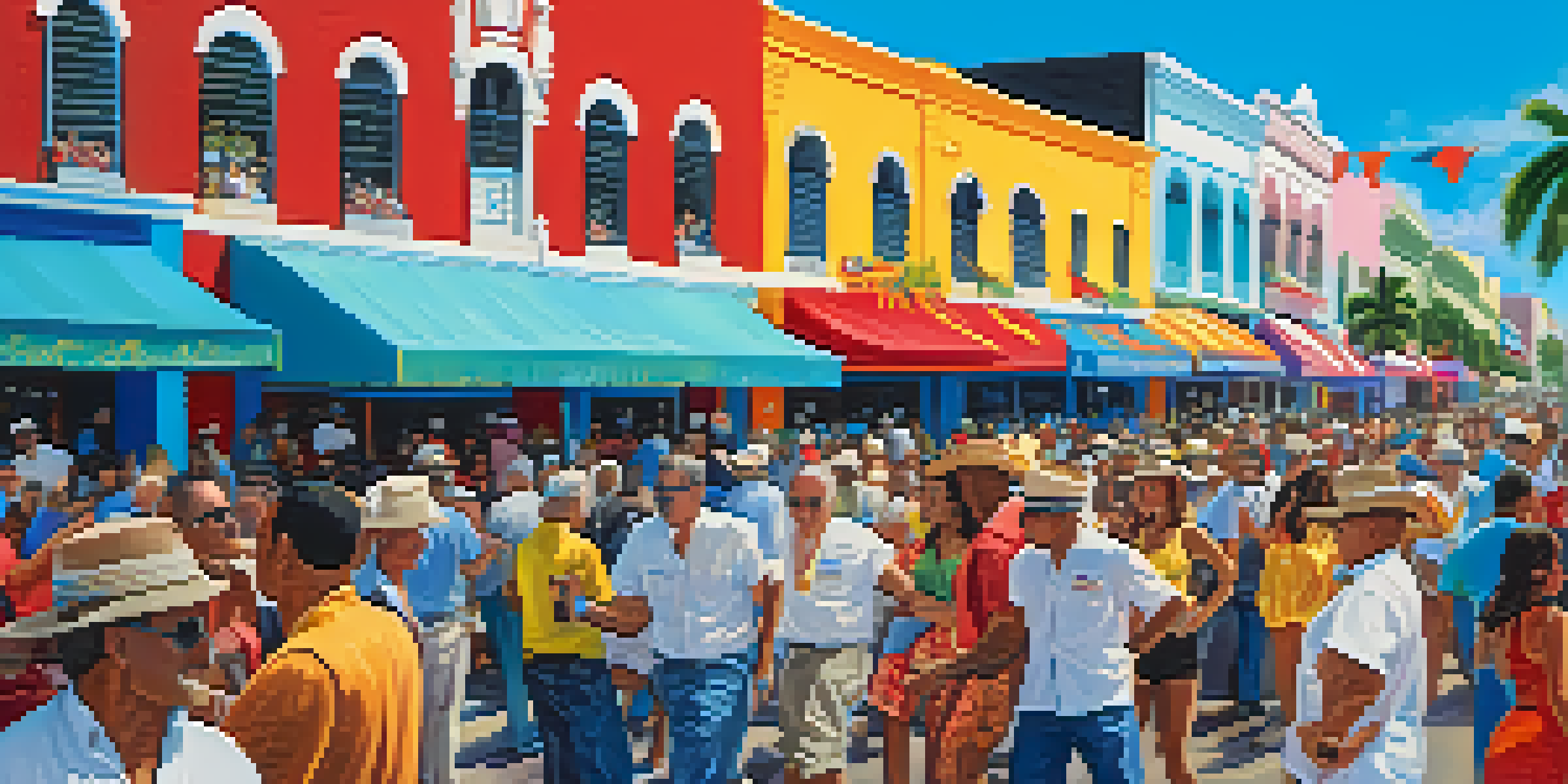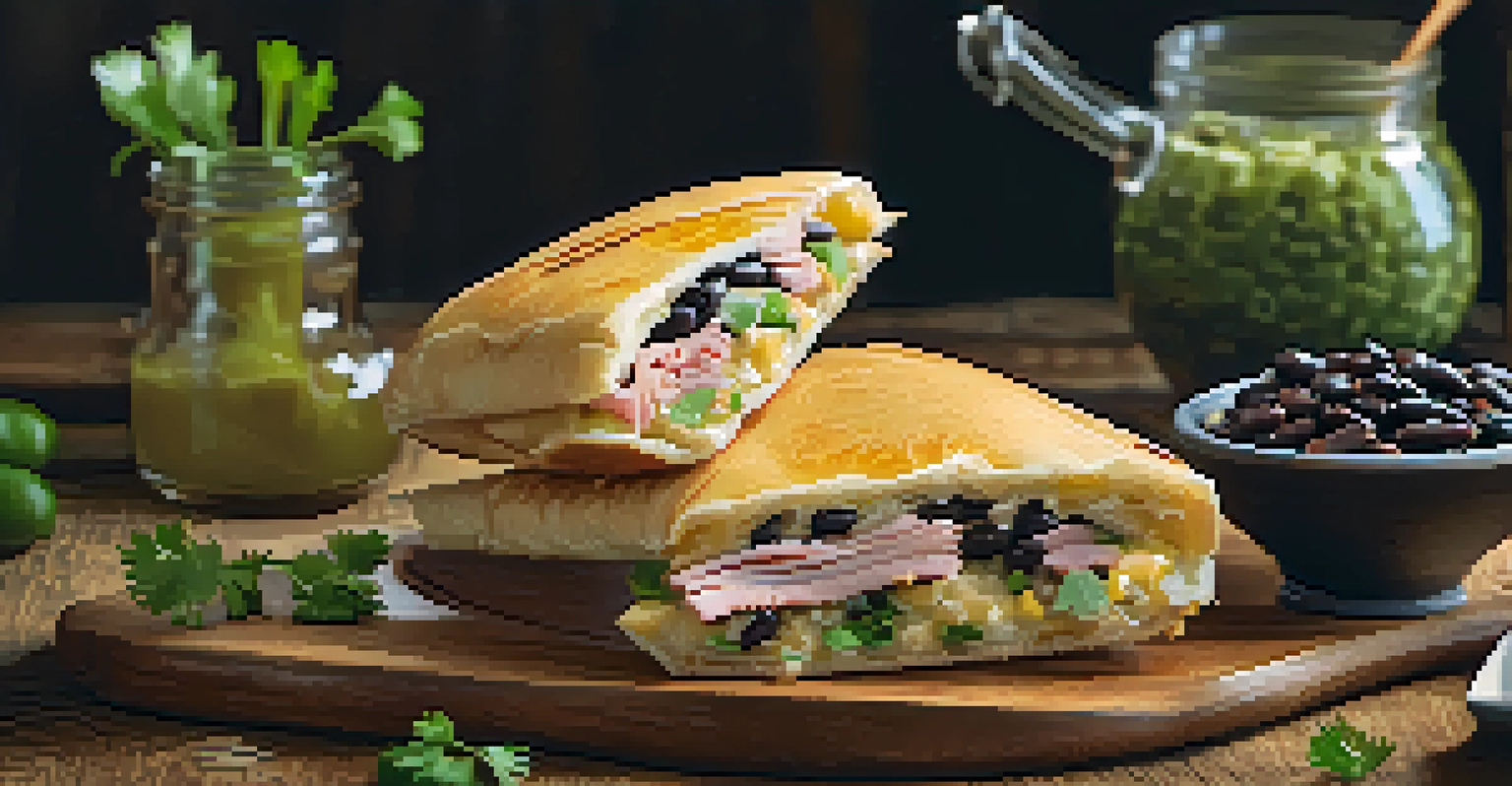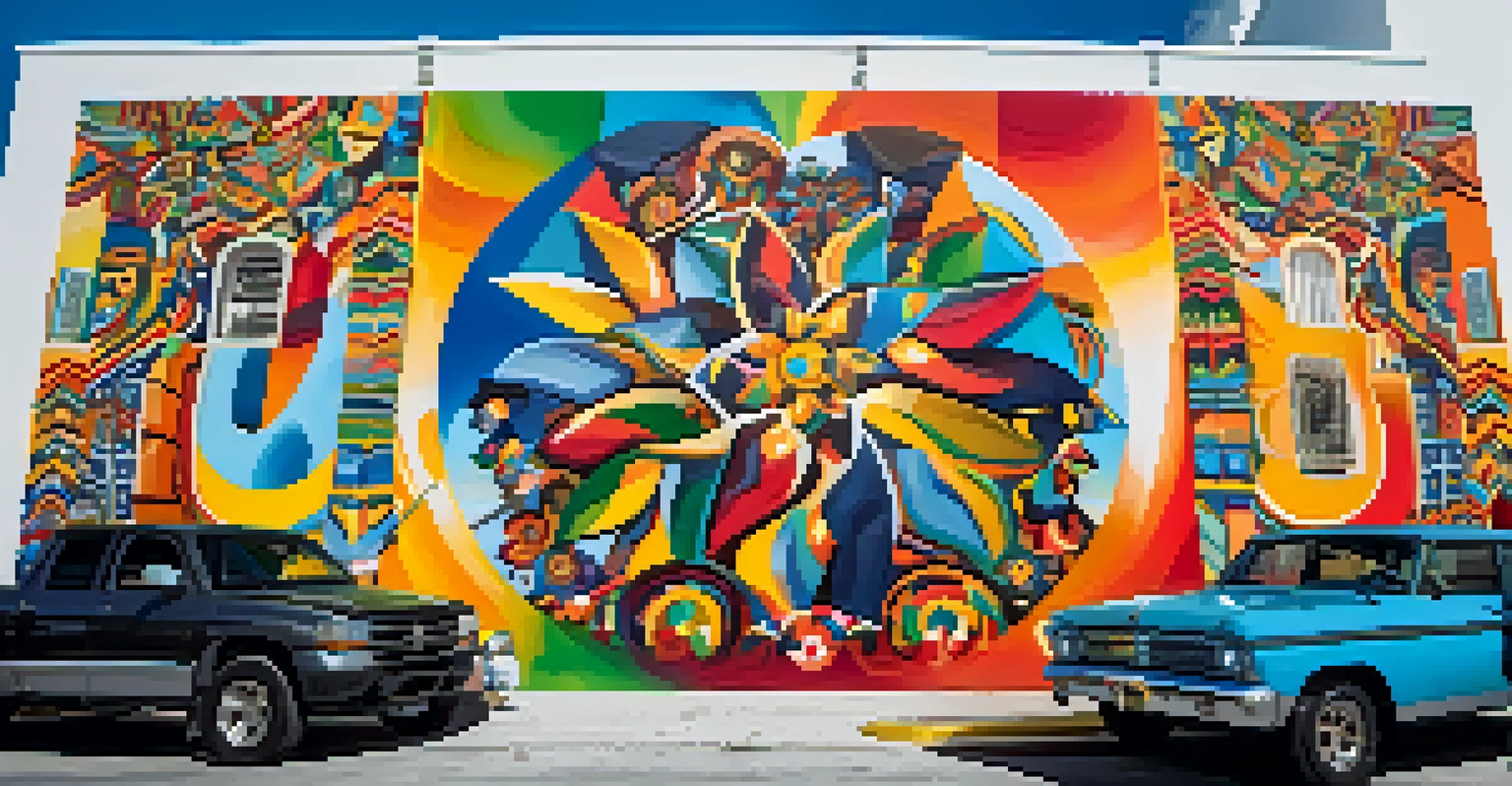Influence of Hispanic Communities on Florida's Culture

Historical Roots: Spanish Influence in Florida
Florida's cultural tapestry is woven with threads of Spanish history, dating back to the early 16th century. The Spanish explorers, including Ponce de León, established the first European settlements, laying the groundwork for cultural exchanges. Today, remnants of this influence can be seen in cities like St. Augustine, the oldest continuously inhabited European-established settlement in the U.S.
The beauty of the world lies in the diversity of its people.
The Spanish language, customs, and traditions have blended with Native American and later immigrant cultures, creating a unique Floridian identity. This historical backdrop is essential to understanding Florida's diverse cultural landscape. It is a prime example of how one group can impact an entire region’s cultural evolution.
Moreover, this early influence paved the way for subsequent waves of Hispanic migration, enriching the state's culture even further. It's fascinating to see how these historical roots continue to shape modern Florida, making it a vibrant mosaic of cultures.
Cultural Fusion: Festivals and Celebrations
One of the most vibrant ways Hispanic communities influence Florida's culture is through their festivals and celebrations. Events like Carnaval Miami and the Calle Ocho Festival in Little Havana are more than just parties; they are celebrations of heritage that bring together people from various backgrounds. These festivals showcase traditional music, dance, and food, creating a lively atmosphere that fosters community.

For instance, at Calle Ocho, attendees can experience the rhythmic beats of salsa and merengue while savoring delicious Cuban cuisine. These events not only highlight Hispanic culture but also invite individuals from all walks of life to participate, promoting unity and understanding. They effectively serve as cultural bridges, connecting diverse communities.
Cultural Heritage Shapes Florida
Florida's rich cultural identity is deeply influenced by its historical Spanish roots and ongoing Hispanic contributions.
Furthermore, these festivities often attract tourists, adding an economic boost to local businesses. The blend of cultures seen during these celebrations is a testament to Florida's dynamic identity, proving that cultural exchange enriches everyone involved.
Culinary Delights: Hispanic Influence on Florida's Cuisine
Florida's culinary scene is a delicious reflection of its diverse cultural influences, especially from Hispanic communities. Traditional dishes like Cuban sandwiches, empanadas, and black beans showcase the rich flavors brought by Hispanic immigrants. Food plays a fundamental role in cultural identity, and in Florida, it’s a delicious celebration of that identity.
Cultural diversity is the engine of creativity and innovation.
Restaurants and food trucks across the state offer a variety of Hispanic cuisines, making it easy for anyone to indulge in these culinary delights. The combination of fresh ingredients and robust flavors creates a unique dining experience that tells a story of heritage and tradition. In many ways, these dishes have become staples in Floridian households, regardless of background.
Moreover, the fusion of Hispanic cuisine with local ingredients has led to innovative culinary creations, reflecting the state’s evolving culture. This culinary evolution not only satisfies our taste buds but also strengthens community ties through shared meals and cooking traditions.
Artistic Expression: Hispanic Contributions to Florida's Arts
The influence of Hispanic communities on Florida's arts scene is both profound and inspiring. From visual art to music and dance, Hispanic artists have made significant contributions that enrich the cultural landscape. Galleries and art festivals frequently showcase works from Hispanic artists, celebrating their heritage and perspectives.
For example, the vibrant murals in neighborhoods like Wynwood Walls in Miami reflect the artistic spirit of the Hispanic community. Each piece tells a story, often rooted in cultural identity and social issues, making the art relatable to broader audiences. This artistic expression serves as a powerful medium for dialogue and understanding between cultures.
Vibrant Festivals Celebrate Diversity
Festivals like Carnaval Miami and Calle Ocho highlight the vibrant Hispanic culture, fostering unity and community engagement.
Additionally, traditional forms of dance, such as flamenco and salsa, have found a home in Florida's performing arts. Dance schools and cultural organizations promote these styles, ensuring that they thrive and evolve. Through these artistic contributions, Hispanic communities continue to shape and enrich Florida's cultural narrative.
Language and Communication: The Spanish Language in Florida
Spanish is more than just a language in Florida; it’s a vital part of the state's identity. With a significant portion of the population being bilingual, Spanish is commonly spoken in homes, schools, and public spaces. This linguistic diversity not only reflects the influence of Hispanic communities but also enhances communication across cultural lines.
The prevalence of Spanish in Florida has led to the incorporation of bilingual signage and media, making information accessible to a broader audience. This accessibility is crucial in a state known for its tourism and diverse population. Moreover, it fosters an environment where learning and appreciating different languages and cultures is encouraged.
The influence of the Spanish language also extends to literature and media, with many Hispanic authors and filmmakers gaining recognition. Their works often explore themes of identity, migration, and cultural heritage, further enriching Florida's literary and artistic landscape. As a result, language becomes a bridge connecting diverse communities and fostering mutual understanding.
Political Engagement: Hispanic Voices in Florida
Hispanic communities in Florida have increasingly become a significant political force, influencing local and state policies. With a growing population, their voices are essential in shaping the political discourse, especially on issues that affect their communities. Engaging in the political process empowers individuals to advocate for their needs and priorities.
For example, the participation of Hispanic voters has been pivotal in recent elections, highlighting their collective power. Organizations that focus on voter registration and education have played a crucial role in mobilizing the community, ensuring that their voices are heard. This active engagement not only impacts election outcomes but also fosters a sense of belonging and representation.
Political Power of Hispanic Communities
Hispanic communities in Florida are becoming a significant political force, advocating for representation and social justice.
Additionally, Hispanic leaders have emerged in various political roles, advocating for policies that promote equality and social justice. Their contributions help to create a more inclusive society, reflecting the diverse perspectives that make Florida unique. Through political engagement, Hispanic communities continue to shape the future of the state.
The Future: Continuing Influence of Hispanic Communities
As Florida continues to grow, the influence of Hispanic communities is expected to expand, shaping the state’s future. With younger generations embracing their heritage while also integrating into the broader society, this cultural dynamism promises to enhance Florida’s diversity. The continuous exchange of ideas, traditions, and innovations will only strengthen Florida's cultural fabric.
Education plays a critical role in this evolution, as schools increasingly incorporate multicultural curricula that celebrate this diversity. By understanding and appreciating the contributions of Hispanic communities, future generations will carry forward this rich cultural legacy. This emphasis on inclusivity helps to foster a sense of unity in a rapidly changing world.

Moreover, as more Hispanic entrepreneurs enter the market, they will continue to influence Florida's economy and cultural landscape. Their unique perspectives and business practices can lead to innovative approaches across various sectors. The future looks bright for Florida, with Hispanic communities at the forefront of cultural and economic growth.